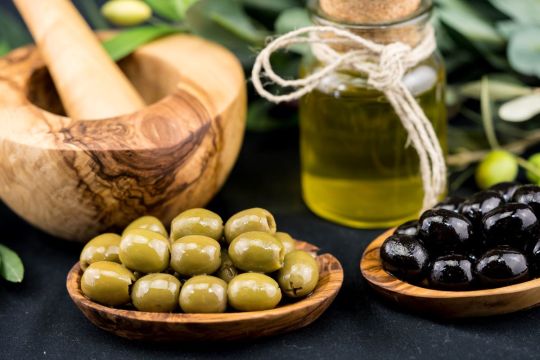#Healthy Fats
Explore tagged Tumblr posts
Text

#healthy#vegetables#vegan#workout#fit#fruits#vegetarian#fitness#veggies#sport#peanuts#peanut butter#peanut brittle#healthy vegetarian#vegan health#eating healthy#healthy lifestyle#healthy fats#healthy living#healthy breakfast#self healing#healthy eating#healthy food#delicious#deliciuos#foodporn#food and drink#vegan food#fresh food#food inspiration
1K notes
·
View notes
Text

#nuts#health#food#healthy fats#omega 3#lifestyle#protein#nutrients#nutrition#nourishment#tips#healthy diet#health information#healthy living#healthy food#healing#health and wellness#healthy eating#healthy#inspiration#life quote#healthy lifestyle#life#life quotes#pistachio#cashews#almond#peanuts#peanut butter#nut butter
37 notes
·
View notes
Text

Salmon & Veggies ✨
Ingredients:
salmon
cauliflower
sweet potato
cucumber
lettuce / greens
lemon
⏱️ <25 mins
Love 🤍
IG: NourishColourBites
#salmon#cauliflower#recipes#salad#healthy#lemon#salmon recipe#sweet potato#veggies#pescatarian#dinner#cooking#kitchen#health#health and wellness#health & fitness#omega 3#nutrients#healthy fats#gluten free#healthy carbs#balanceddiet#balancedlife#balanced meals#low cal meal#mealspo#weight loss#food#foodie#foodporn
14 notes
·
View notes
Text

Nuts are one of the healthiest savory snacks❣️💛❤️
They're a great source of fiber, protein, and healthy fat❣️
This combination provides long-term energy, helps you to feel full and satisfied, and may help with weight loss or management❣️
8 notes
·
View notes
Text

These are the top 3 nutrients I prioritize when building my plate:
1. Protein
2. Fiber (vegetables & fruit)
3. Heathy fats
Anything after that is simply out of pleasure or if I have room, but those are the top three nutrients that always get priority.
By prioritizing your plate with the right nutrients you will feel full and nutritionally satisfied, reducing the likelihood of overindulging in nutrient-deficient foods that will harm your health and cause cravings for more of the same. Over time, you will also gradually shift your palate to crave healthier foods.
#nutrition#guthealth#antiinflammatory#Food#health#healthy#healthy foods#healthyeating#healthtips#weightloss#weight loss#protein#Fiber#fats#healthy fats
7 notes
·
View notes
Text
How Much Protein in a Chicken Thigh? Comparing Different Cuts of Chicken
Introduction
Protein is a pivotal macronutrient of great essence for most bodily functions, from muscle generation and tissue repair to bolstering the immune system. For the purposes of protein sourcing, chicken remains the most preferred due to its being clean, versatile, and reasonably priced, thereby being everybody's choice.
This article will explore how much protein chicken thighs contain relative to other chicken cuts: breast, drumsticks, wings, and tenderloin. We shall provide a nutritional breakdown of each cut to enable you to choose the cut most appropriate for your dietary requirements.
#chicken#health & fitness#fitness#nutrition#healthy food#workout#gym#antioxidants#hydration#vitamins#skin health#protein#healthy fats#minerals#counting calories
3 notes
·
View notes
Text
Slavic pagan dinner!
(or at least mine🥲 but, well, our ancestors were on low budget most of their life, and so am I, I guess?🫠)

🍞 bread- Slavic food made from grains
🧈 butter- also Slavic food. For east Slavs even connected with maslenica week and food bliny
🫘 horse beans- only old-world beans that were eaten also by our ancestors. the rest of the bean kinds were discovered in the new world (America)
#slavic pagan#slavic polytheist#slavic paganism#slavic polytheism#slavic pagans#slavic people#pagan blog#slavic culture#slavic food#healthy food#food#dinner#im eating alone because i have noone to eat with 🥲#beans#horse beans#butter#bread#meal#healthy fats#healthy eating#low budget
2 notes
·
View notes
Text

Ooh, one of my favourite dinners.
Salmon, avocado (not had any in quite a while!), cabbage, cauliflower and broccoli with sea salt and black pepper.
Juice squeezed from my half orange earlier with apple cider vinegar and soda water.
I've thoroughly enjoyed my food today.
Sure, I'm missing my porridge but it will return 😋.
#suzieb-fit#fitspo#fitspiration#fitblr#healthy living#health and fitness#health and nutrition#diet and nutrition#healthy nutrition#healthy fats
48 notes
·
View notes
Text
Learn how the ketogenic (keto) diet can help manage anxiety by stabilising blood sugar, improving gut health, reducing inflammation, and promoting neurotransmitter balance. This guide provides practical steps to adopting the diet and lifestyle tips for better mental health.
#Keto diet#Anxiety management#Mental healt#Blood sugar stability#Gut-brain connection#Anti-inflammatory diet#Neurotransmitter balance#Ketosis#Anxiety relief#Healthy fats
2 notes
·
View notes
Text
Healthy Fats: The Indian Way to Fuel Your Body अच्छी वसा बनाम बुरी वसा: भारतीय भोजन स्रोत
Discover the power of healthy fats in your diet! In this informative video, we'll explore the difference between good fats and bad fats, and how to incorporate healthy fats into your Indian meals for optimal nutrition and weight management.
Key points covered in this video:
Good Fats vs. Bad Fats: Understand the importance of healthy fats and how they differ from unhealthy fats.
The Benefits of Healthy Fats: Learn how healthy fats can support heart health, brain function, and weight management.
Healthy Fats in Indian Cuisine: Discover a variety of delicious Indian foods that are rich in healthy fats.
How to Incorporate Healthy Fats into Your Diet: Learn how to balance healthy fats with other macronutrients for a well-rounded diet.
Whether you're a seasoned foodie or just starting your journey to a healthier lifestyle, this video will provide you with valuable insights into the role of healthy fats in your diet.
#Indianfood, #healthyfats, #goodfats, #badfats, #nutrition, #weightloss, #hearthealth, #brainhealth, #healthyeating, #Indiandiet, #healthyIndianrecipes, #omega-3fattyacids, #unsaturatedfats, #saturatedfats, #transfats
youtube
#fitness#healthy weight loss#weight loss tips#weight loss#summer weight loss#weight loss diet#weight loss motivation#health and wellness#healthy lifestyle#youtube#healthy fats#good fat#nutritiousmeals#saturated fats#bad fats
2 notes
·
View notes
Text
The Amazing Benefits of Extra Virgin - Cold Pressed Olive Oil
Olive oil has been revered for its culinary and medicinal properties for thousands of years. This golden elixir has been a staple of Mediterranean cuisine for centuries and is renowned for its unique flavor and numerous health-promoting properties. Among the different types of olive oil available, extra virgin – cold pressed olive oil stands out as a superior choice due to its remarkable health…

View On WordPress
#anti-inflammatory#antioxidants#extra virgin olive oil#healthy fats#heart health#Mediterranean diet#polyphenols
2 notes
·
View notes
Text






Macronutrients
Nutrition Essentials: Part 1
Carbs, Protein, Fats
What are they?
Why do we need them?
-> Stay tuned for part 2 (Micronutrients)
IG: @NourishColourBites
#macronutrients#macros#carbs#carbohydrates#healthy carbs#protein#protein powder#high protein#vegan protein#healthy fats#fats#fat#omega 3#omega 6#healthy#health#health tips#health facts#healthy living#healthy diet#healthy lifestyle#healthy life tips#fitness#weight loss goals#fat loss#muscle#inspiration#motivational#information#healthy tips
31 notes
·
View notes
Text
What are the best foods to eat for a healthy gut?
"Gut Health 101: The Best Foods to Keep Your Tummy Happy (And Why It Matters)"

Let’s talk about your gut—no, not the one you’re trying to tone at the gym. Your gut health is the unsung hero of your overall well-being. A healthy gut means better digestion, a stronger immune system, and even improved mood (thanks to the gut-brain connection).
But with so much buzz around probiotics, prebiotics, and fermented foods, it’s easy to feel overwhelmed. Here’s a no-BS guide to the best foods for a healthy gut, backed by science and real-life practicality.
1. Fermented Foods (Hello, Probiotics!) Fermented foods are packed with live bacteria that boost your gut microbiome.
Yogurt: Look for “live and active cultures” on the label.
Kefir: A tangy, drinkable yogurt with even more probiotics.
Sauerkraut: Fermented cabbage that’s rich in gut-friendly bacteria.
Kimchi: A spicy Korean staple that’s great for digestion.
Kombucha: A fizzy, fermented tea that’s trendy for a reason.
Pro Tip: Start small—too much too soon can cause bloating.
2. Fiber-Rich Foods (Fuel for Good Bacteria) Your gut bacteria thrive on fiber, which they ferment into beneficial compounds.
Whole grains: Oats, quinoa, and brown rice.
Fruits: Apples, bananas, and berries (with the skin on).
Vegetables: Broccoli, Brussels sprouts, and carrots.
Legumes: Lentils, chickpeas, and black beans.
Real-Life Hack: Add a handful of beans to your salad or swap white rice for quinoa.
3. Prebiotic Foods (The Probiotics’ Best Friend) Prebiotics are non-digestible fibers that feed the good bacteria in your gut.
Garlic and onions: Add them to soups, stir-fries, or roasted veggies.
Asparagus: Grill it, steam it, or toss it in a salad.
Chicory root: Often found in coffee substitutes or fiber supplements.
Jerusalem artichokes: A nutty, potato-like veggie that’s prebiotic gold.
Pro Tip: Pair prebiotics with probiotics (e.g., yogurt with banana) for a gut-health power combo.
4. Healthy Fats (Because Your Gut Loves Them Too) Good fats reduce inflammation and support gut lining integrity.
Avocado: Creamy, delicious, and full of fiber.
Olive oil: Drizzle it on salads or roasted veggies.
Nuts and seeds: Almonds, walnuts, chia seeds, and flaxseeds.
Real-Life Hack: Add a tablespoon of chia seeds to your morning smoothie or oatmeal.
5. Bone Broth (Gut-Soothing Superfood) Bone broth is rich in collagen and amino acids that repair the gut lining.
How to use: Sip it like tea, use it as a soup base, or cook grains in it.
DIY option: Simmer bones (chicken, beef, or fish) with veggies for 12–24 hours.
Pro Tip: Look for low-sodium store-bought versions if you’re short on time.
6. Polyphenol-Rich Foods (Gut Microbiome Boosters) Polyphenols are plant compounds that feed good bacteria and fight inflammation.
Berries: Blueberries, strawberries, and raspberries.
Dark chocolate: Go for 70%+ cocoa (in moderation, of course).
Green tea: Sip it hot or cold for a double dose of antioxidants.
Red wine: A glass occasionally can be beneficial (but don’t overdo it).
Real-Life Hack: Add a handful of berries to your yogurt or oatmeal.
7. Hydration (The Unsung Hero of Gut Health) Water keeps your digestive system running smoothly.
Daily goal: Drink half your body weight (in pounds) in ounces.
Herbal teas: Peppermint, ginger, and chamomile soothe the gut.
Pro Tip: Start your day with a glass of warm water and lemon to kickstart digestion.
Conclusion A healthy gut isn’t just about popping probiotics or eating one “Superfood.” It’s about a balanced diet rich in fiber, fermented foods, and anti-inflammatory ingredients. Small, consistent changes—like adding sauerkraut to your sandwich or swapping chips for nuts—can make a big difference over time.
One Last Thing: Listen to your body. If a food makes you feel bloated or uncomfortable, it might not be right for you. Gut health is personal—find what works for you.
What’s your go-to gut-friendly food? Share below—let’s swap tips and keep our tummies happy! 🥑🍓
#healthcare#health and wellness#health & fitness#healthy gut#best foods healthy gut#healthy fats#fiber rich food
1 note
·
View note
Text
Avocado Tree: Nutritional Goldmine, Superfood Symbol, and Green Treasure
#vocado Farming#Culinary Ingredient#Environmental Benefits#Green Treasure#Healthy Fats#Herbal Uses#Nutritional Goldmine#Orchard Favorite#Superfood Tree#Tropical Fruit
0 notes
Text
Saturated fats are primarily animal-based fats (with the exception of some plants). Unlike healthy unsaturated fats that are liquid at room temperature, saturated fats are solid at room temperature. Saturated fats are the inflammatory fats, while unsaturated fats are anti-inflammatory. Regularly consuming saturated fats may raise cholesterol and increase risk of heart disease. It can also contribute to high blood sugar and fatty liver disease. If you consume it, it is recommended you do not exceed 13 grams/day. Lean towards your anti-inflammatory and brain health fats, the unsaturated fats.
#highbloodsugar #diabetes #bloodsugar #insulin #cells #cellhealth #saturatedfats #animalfats #glucose #muscle #hearthealth #unsaturatedfats #healthyfats #brainhealth #antiinflammatory #healthtips #nutrition #omega #fattyliver #fats #cholesterol #weightloss #meat #foodisinformation #healthyeating #disease #health #healthy #healthyliving #healthylifestyle
#blood sugar#Diabetes#heart health#stroke#heart attack#Health#Heathy#Health tips#cholesterol#LDL#HDL#liver health#fatty liver#liver disease#fats#healthy fats#unhealthy fats#saturated#saturated fats#unsaturated#unsaturated fats#heathy living#healthy habits#healthy lifestyle#diet#Nutrition#brain health#Inflammation#antiinflammatory
9 notes
·
View notes
Text
What Are Healthy Fats? Why You Need Them in Your Diet
#healthy fats#health & fitness#nutrition#fitness#healthy food#workout#gym#antioxidants#hydration#vitamins#skin health#brain health supplement#heart health
0 notes